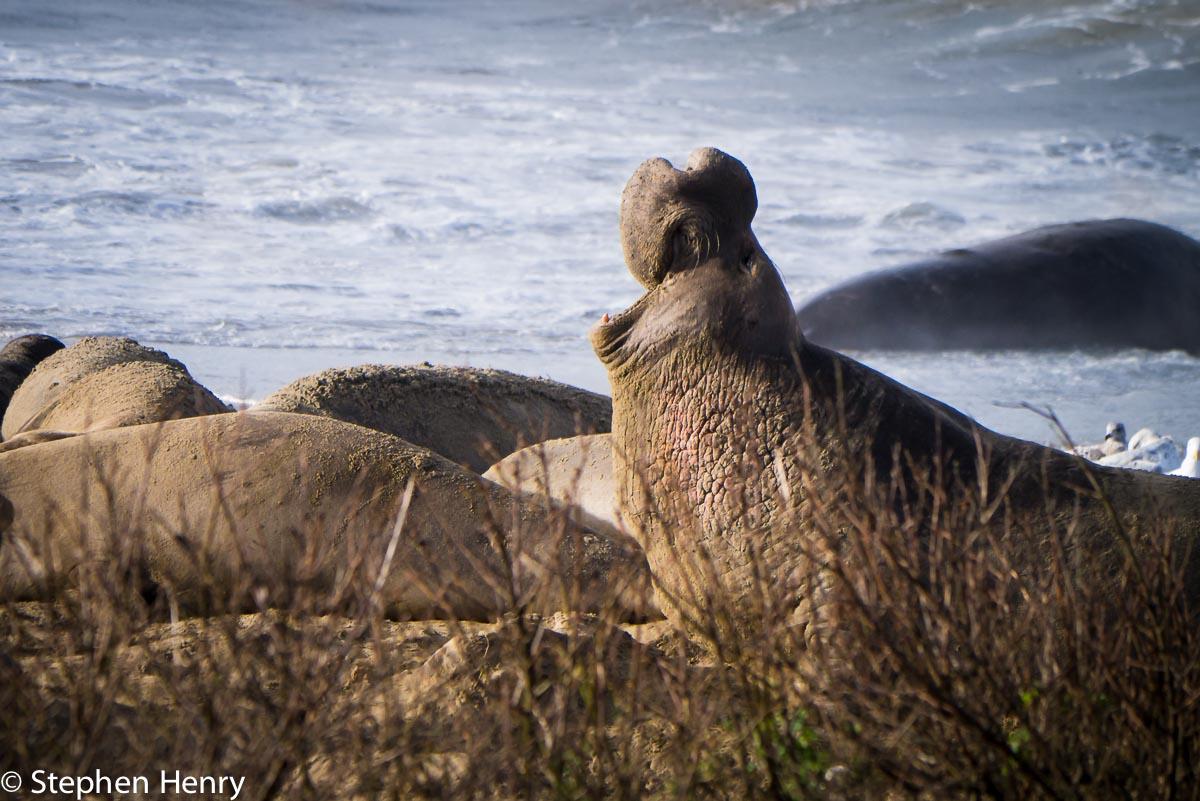Elephant seal viewing requires a 3-4 mile moderate hike over varied terrain, including sand dunes. Driving to see them is not an option. Sturdy shoes, layered clothing, water and rain/wind/sun protection are recommended.
Visitors wishing to see the elephant seals and requiring mobility assistance are encouraged to make a reservation for an Equal Access Tour throughout the year.
During the breeding season, from Dec 15 through March 31, you can experience the seals within the preserve with a docent-guided walk. Tickets must be purchased in advance, although a few are reserved for sale on the day. Additional information may be found on the State Parks' website.
Throughout the remainder of the viewing year, April 1 through November 30, visitors are able to walk through the preserve to the viewing areas at their own pace after obtaining a free self-guided permit. Volunteer docents will greet you at the viewing stations and interpret what you are seeing. Visitors must exit the Natural Preserve by 5 pm, which is earlier than the parks’ closing hour of sunset.
The Natural Preserve is closed December 1 through December 14.
Picnic tables are provided close to the visitor center and parking lot. No picnicking is allowed within the Natural Preserve.

